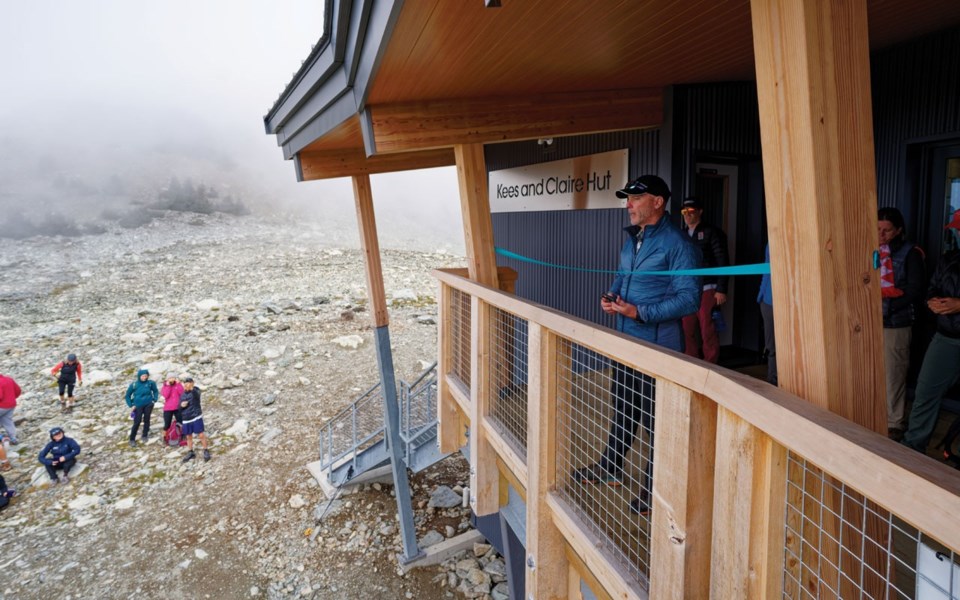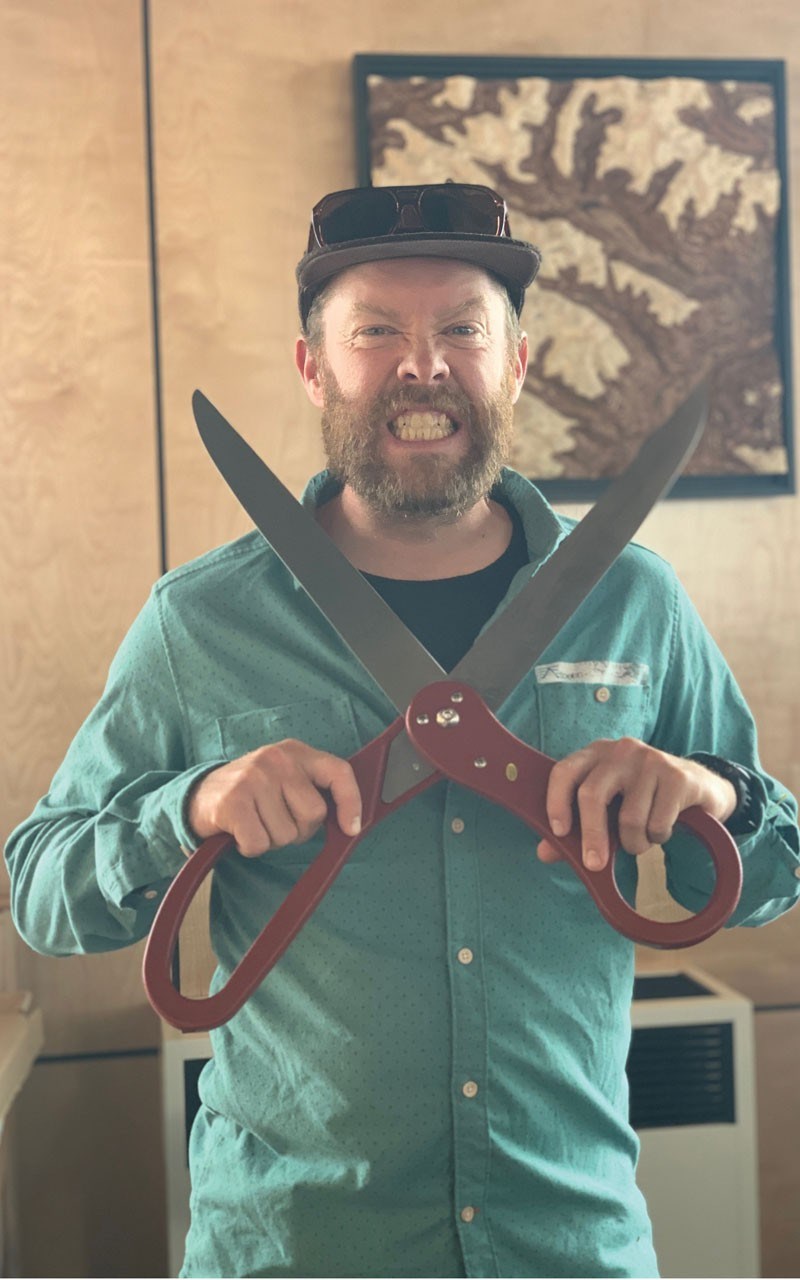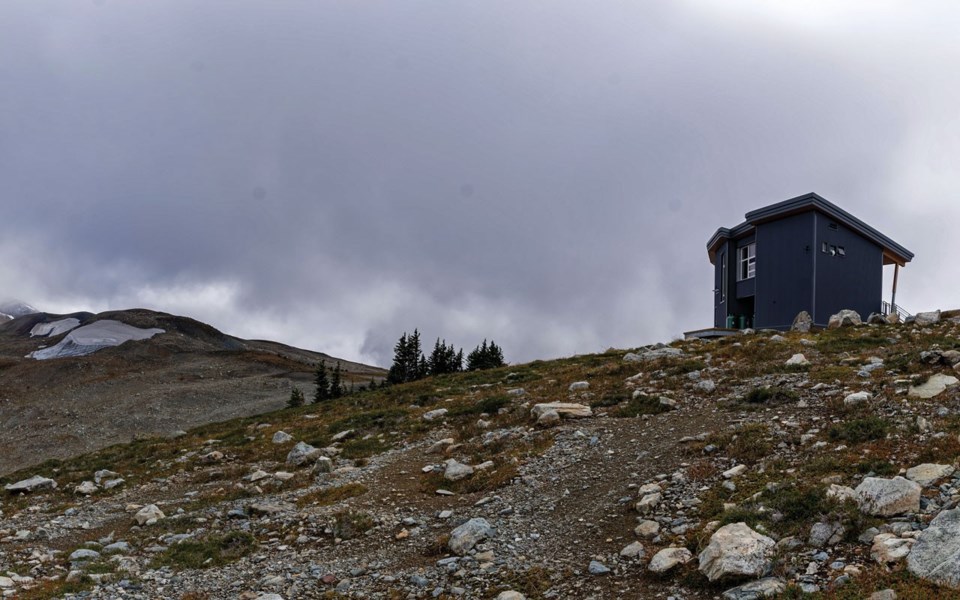
Whistler's backcountry scene hit a major milestone last weekend, with the grand opening of the Kees and Claire Hut, the first of three huts that will span the iconic Spearhead Traverse, connecting Whistler and Blackcomb mountains.
Standing on the raised deck of the state-of-the-art, energy-efficient building, former Whistler councillor and Spearhead Huts Society (SHS) Chair Jayson Faulkner fought back tears as he thanked the hundreds of volunteers and dedicated board directors who brought the complex, multi-million dollar project to fruition.
"We are here today to celebrate what has been a really amazing journey," said Faulkner.
"It never would have happened without the volunteers, the families, the professionals that helped us out.
"It's been a labour of love for everybody involved."

Earlier that day, Whistler elder and trailblazing mountaineer Werner Himmelsbach was able to visit the hut for the first time, recalled Faulkner.
The Himmelesbach Hut, which Himmelsbach and members of the BC Mountaineering Club built just over 50 years ago, still stands near Russet Lake, a few hundred metres from the Kees and Claire Hut.
"We really wanted to get the project done so [Himmelsbach] could be part of it," said Faulkner, later in an interview. "So when he flew up today, he was really emotional, and he said to me, 'this will be the last time I'll ever come up here.'"
It's important to honour the "giants" who blazed the way for B.C.'s rapidly growing mountaineering scene, said Faulkner, explaining why showing Himmelsbach the new hut was such an emotional experience for him as well.
Among the crowd were two of the original men to complete the iconic Spearhead Traverse, Karl Ricker and Bert Port, back in 1964.
"Those are guys with vision, who were passionate outdoors people," said Faulkner. "It was their vision we picked up on."
In total, the cost of the hut was about $2.3 million, said Faulkner, adding that provincial approval required building to strict (and expensive) standards, and the isolated location of the fly-in-only hut added to the cost. (Helicopter time alone cost about $400,000 to fly in building materials.)

Fundraising was significantly helped with a $900,000 donation from the Brennikmeyer Foundation in the early days of the project, as well as several other sizeable donations, including $150,000 in Resort Municipality Initiative funding from the province. Smaller donations, and numerous events held over the last decade, funded about 40 per cent of the final cost, said Faulkner.
In total, about 70 companies donated cash or in-kind materials, such as the hut's triple-pane glass and the cedar wood used to build the deck.
Without their support, the "retail" cost of the project would have been closer to around $3 million, said Faulkner.
The hut was built by Reid Madiuk's Coast Essentials Construction, with his core team directing volunteers who did much of the manual work at the site, reducing cost to the SHS significantly.
The Brennikmeyer Foundation was established after the tragic accidental deaths of Cornelius (Kees) Brenninkmeyer, 25, and partner Claire Dixon, 27, in 2007.
At the time of his passing, Brennikmeyer was actively pursuing a career as an alpine mountaineering guide, and he and Dixon were working as hut custodians on the Wapta Traverse in Alberta for the Alpine Club of Canada.
Julie Brennikmeyer, Kees's sister, was one of several people to address the crowd, expressing her gratitude to the volunteers and board directors who "worked tirelessly" on the project.
Added Claire's brother Paul, "The one thing I do want to say is that Claire and Kees would have been the first ones up ... It's just overwhelming that there is something like this in their memory."
Family and friends of Brett Carlson, Mischa Arnott, and Barbara McGeough also spoke. Significant donations to the hut have been made in their memories as well.
Mischa's mom Renata Arnott recalled that her daughter, who passed away in the spring of 2018 at just 11 years old, would look up at the mountains when she was sick and pledge to return to them when she was better.
"I knew that might not happen in the physical sense, but I do feel that she is up here—as are all our loved ones," said Arnott.
The hut's lounge, which features several long, communal tables and an open area with a gas fire, will be named in honour of Brett Carlson, who died in a tragic ski accident in the Whistler area in 2000.
Feet Banks was among a number of family and friends of Carlson's who had gathered the night prior.
"Being here with all these incredible families, and connecting and telling stories, that's going to go on for the next hundred years," said Banks, who is also a columnist with Pique. "If someone's up here, they're probably worth hanging out with."
The kitchen is dedicated to Barbara McGeough, an interior designer and passionate cook who sat on the board of the SHS.
"Barbara loved to cook and would have wanted you to eat really well," said her husband, Colin Boyd.
Following the speeches, Julie Brennikmeyer explained the larger significance of the hut to her family.
Kees and Claire, she said, are thought to have passed away from a combination of carbon monoxide poisoning and a roof collapse from the snow cave they had built for the night.
Brenninkmeyer said she is hopeful that the hut can be used to facilitate safe travel through the backcountry and help spread an important safety message about the dangers of cooking in enclosed spaces.
"A hut opportunity gives people in a growing sport a safe place for refuge," she said.
"What we'd like to see is more information out there about the dangers of cooking in tents and snow caves, which is common practice."
Spending time with the other families, she said, was "overpowering and special."
Organizers continue to fundraise for solar panels and a water-collection system for the hut. Go here to contribute: www.spearheadhuts.org/how-you-can-help/donate.
To book a bed in the hut, go to spearheadhuts.org/reservations.



